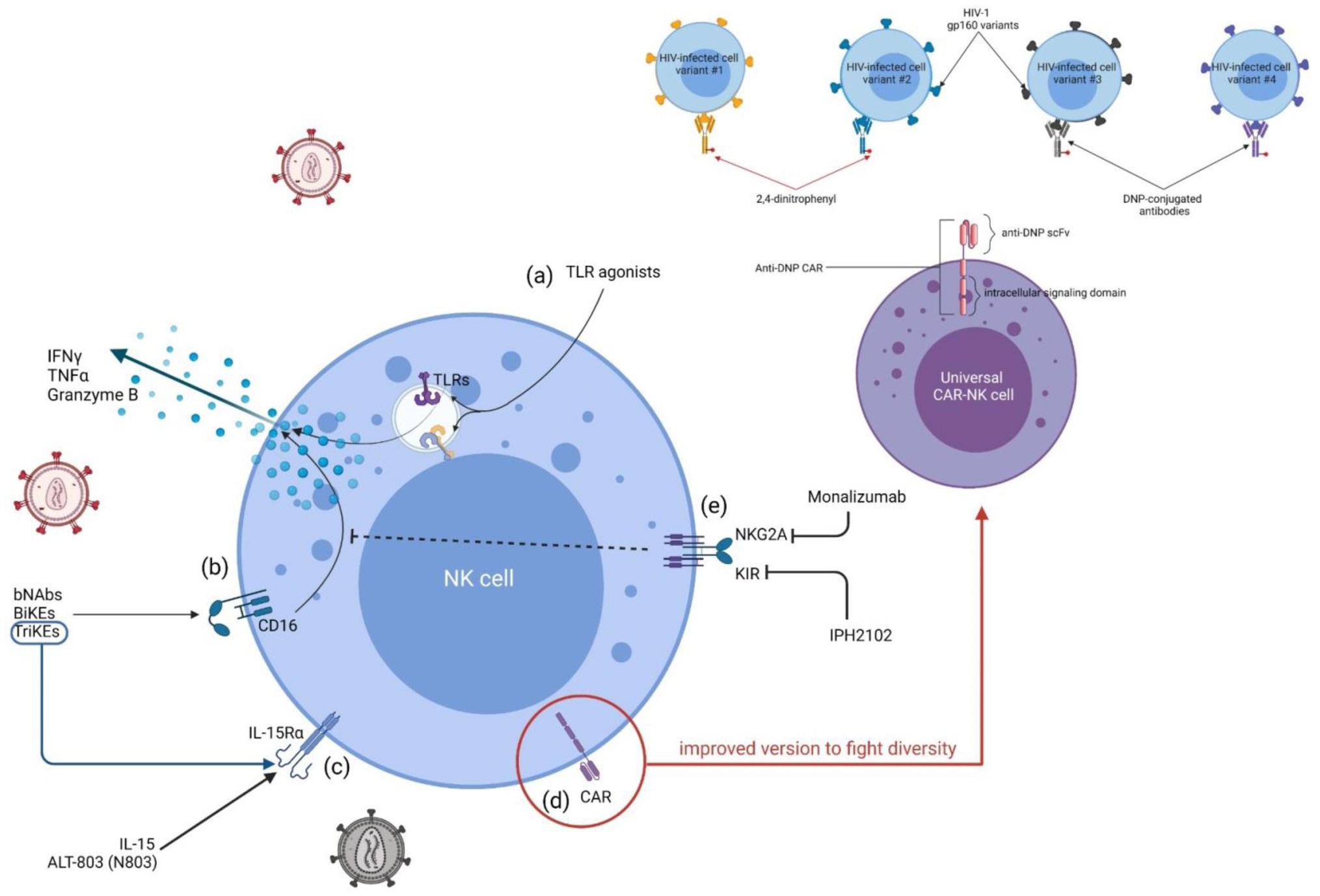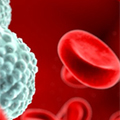No therapeutic drug has been able to completely eradicate HIV-infection so far, even after decades of research. A major challenge in HIV drug development is its immense diversity. NK cells are well-known for their anti-viral and anti-tumor functions. Since recently, NK cells have gained interest of researchers as they have paved the way for novel approaches in controlling HIV-infection supported by promising results observed in cancer immunotherapy trials. Here we report an anti-DNP CAR-NK cell approach introduced by Lim et al. capable of recognizing 2,4-dinitrophenyl tagged to anti-gp160 antibodies, which seemingly provides an effective solution to counteract HIV variability.
Despite decades of research, no drug has so far been fully effective against HIV. Although currently available antiretroviral therapy (ART) can effectively suppress HIV replication by acting at different levels of the HIV life cycle, it does not completely eradicate infected cells but instead converts them into latent viral reservoirs which upon non-adherence to treatment leads to viral rebound. Moreover, ART presents many challenges in terms of long-term drug toxicities and side effects [1]. It has therefore become crucial to seek novel ways of approaching HIV cure. Immunotherapy seems to have paved the way for this. Importantly, NK cell-based immunotherapy has gained ground in cancer treatment with promising results [2]. NK cells are well known for their anti-tumor and antiviral activity, and they do not require prior antigenic stimuation for activation [3]. Therefore, NK-based immunotherapies against HIV are currently under consideration and are being tested in clinical trials. Some of those include CAR-NK cell therapy, toll-like receptor (TLR) agonists, broadly neutralizing Abs (bNAbs), bi- and tri-specific killer engagers (BiKEs & TriKEs), facilitating antibody-dependent cellular cytotoxicity (ADCC), blocking inhibitory NK receptors during infection, IL-15 and IL-15 superagonists (eg: ALT-803), etc. [4] (Figure 1).
A major cause of frustration and a fact that is immensely challenging in HIV drug development attempts is overcoming HIV diversity. In fact, previous studies on multi-specific bNAbs have shown that focusing on two or three epitopes are inadequate to cover all HIV-1 variants. However, we recently came across an interesting article by Lim et al. where they have introduced for the first time in history, a universal CAR-NK cell approach providing an effective solution to counteract this HIV variability [5]. In contrast to currently available CARs which target a single epitope of HIV envelope glycoprotein gp160 (a complex between gp120 and gp41) and thus have failed to address this issue, the universal CAR model developed by Lim et al. indirectly targets different gp160 epitope variants. Their CAR-NK cell has been designed to recognize 2,4-dinitrophenyl (2,4-DNP) tagged to gp160 specific Abs, given that anti-gp160 Abs with different specificities are readily available. See Figure 1d [5]. This kind of approach has several potential advantages. Firstly, it is compatible with all types of Abs including those which are not effective in inducing ADCC. Also, it has higher specificity and can be considered safer as ADCC will not be induced by naturally produced serum Abs. Furthermore, they do not impair the primary NK cell response against gp160+ HIV-infected cells [5] As a solution to the competition exerted by natural anti-2,4-DNP Abs that exist in minor proportions in serum (≈1%), Lim et al. have suggested increasing the affinity of their universal CAR for DNP [6]. Compared to the use of T cell-based approaches, allogeneic NK cells are a better alternative since it is linked to a lower risk of inducing GvHD [7]. Their approach will be further evaluated through mouse models in future studies.
Thus, we conclude that in order to tackle the tremendous diversity of HIV epitopes similar cost-effective and flexible universal strategies will be necessary. Furthermore, under the current situation, this approach alone will not be sufficient since the latent HIV reservoir will have to be reactivated and thus combination therapy with LRAs (latency reversing agents) and possibly other agents such as antiretroviral combinations seem essential as under pressure HIV is known to generate escape mutants or lead to selection [8],[9].










 DownLoad:
DownLoad:



